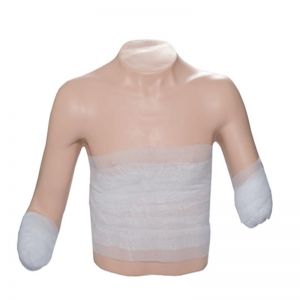To practice bandaging on an advanced high level bandaging model, you first need to make sure you are familiar with the basic principles and techniques of bandaging. Here are the specific steps to train the bandaging method on the model:

Understand the model: First, you need to understand the structure and characteristics of the advanced high bound model. This model can usually simulate the dressing needs of different parts of the human body, such as the head, neck, chest, limbs, etc. Understanding the characteristics of the model will help you train better.
Prepare materials: Prepare the required bandage materials. The bandage material should be clean, and the appropriate size should be selected according to the training needs. If possible, it is best to use sterile bandages to simulate a real medical environment.
Select the dressing site: According to the training purpose, select the part to be dressed on the model. For example, you can choose to simulate a head injury, a broken arm, or a sprained calf.
Bandaging: Follow the correct steps and techniques for bandaging. This includes ring bandaging, spiral bandaging, spiral folding bandaging, "8" word bandaging, return bandaging and other methods. During the dressing process, pay attention to controlling the tightness of the bandage to ensure that it is neither tight nor loose, so as not to interfere with blood circulation [2].
Check the dressing effect: After finishing the dressing, check the dressing effect. Make sure the bandage is tight, stable and does not cover the tips of your fingers or toes in order to monitor blood circulation. At the same time, check for any signs of discomfort or pain and adjust the dressing accordingly.
Record and feedback: During the training process, record your operation process and problems encountered. This will help you identify and improve your dressing skills. Also, asking for feedback from mentors or colleagues is a great way to learn, and they can help you identify areas for improvement.
Repeated practice: Bandaging is a skill that requires repeated practice. By constantly training on the model, you can gradually improve your dressing skills and speed to cope with the real medical environment.
Please note that while the advanced high bandage model provides a good training platform, it is not a complete substitute for a real medical environment. In practice, you also need to consider the specific situation and needs of the patient, and flexibly adjust the dressing method.

